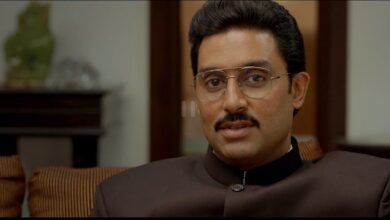The Six Triple Eight Review: Netflix Film Tells a Powerful and Neglected Story
The Six Triple Eight Review (6888 Netflix): From December 20, 2024, The Six Triple Eight will be available on Netflix. This film, directed by Tyler Perry, was inspired by the article by American historian Kevin Hymel, Fighting a Two-Front War. The plot follows the story of the 6888th Central Postal Directory Battalion, the only battalion made up of African American women who were sent to service in Europe during the Second World War. The Six Triple Eight is a work inspired by the true history of the 6888th Central Postal Battalion, the only entirely female department made up of African American women to serve in Europe during the Second World War. This movie Netflix takes us to the heart of a mission as fundamental as it is little known: to dispose of millions of letters intended for soldiers at the front. With an approach that mixes historical drama and social reflections, Perry explores themes of discrimination, resilience, and the power of human connections in times of war. Emotionally blackmailing, it was once said with a purely negative meaning. But getting excited by manipulating the facts in a fictional way is not always regrettable, especially when it is at the service of a good cause.

When he moves away from comedies and disguises who made his fortune, Tyler Perry reveals his growth as an author and director, but this time the subject he focuses on is really important. In the war movie The Six Triple Eight, the filmmaker exploits a little-known piece of history of the Second World War, that of the 6888 battalion, the only brigade entirely composed of black women sent to Europe, as a monument to the fight against racism and discrimination. To offer the public a sufficiently strong emotional hook, Tyler Perry focuses on the story of Lena Derriecott King, a centenary auxiliary who disappeared in early 2024, but whom we see and hear in the moving final who, just 18 years old, left the family and his home in Pennsylvania to enlist following the death of his boyfriend in the war. Seemingly unsuitable for the labors of the front, Lena will pass the training with difficulty and then be sent with her companions to Europe, at the request of Eleanor Roosevelt, to dispose of three years of undelivered mail sending seventeen million letters to troops and their families for “keep morale high at the front”.
The Six Triple Eight Review: The Story Plot
The Six Triple Eight weaves a love story and personal sacrifice with a historical event of enormous significance, following the events of the 6888th Battalion of the Central Postal Directory, a unit composed exclusively of African American women, the only ones to serve in Europe during the Second World War. The protagonist, Lena Derriecott (played by Ebony Obsidian), decides to enlist after losing her boyfriend, a young Jewish pilot, shot down at the front. His personal story is intertwined with that of his battalion companions, led by the determined Major Charity Adams (Kerry Washington). In a context marked by racism and sexism, these women find themselves assigned to a humble but essential task: to sort millions of letters which, because of the war, had never reached their destination. With a meticulous organization and an inexhaustible strength of mind, the battalion manages to complete this titanic feat, giving soldiers back to the front and their families a vital human contact. But the film also shows the determination of these women to want to fight for their homeland, challenging not only logistical difficulties and military bureaucracy but also deep-rooted prejudices that relegated them to marginal roles.
The Six Triple Eight Review and Analysis
Tyler Perry’s intent in The Six Triple Eight is to do justice to the brave black soldiers that history, and their country, have forgotten. To do this, the director puts one up narrative structure that oscillates between Lena’s point of view, to which the public adheres more easily, and that of Major Adams. This alternation creates a certain indecision in the narrative structure, to which one is added patinated style adopted by the director, inappropriate for a war film. Style is also reflected in the protagonists. Despite Major Adams’ recommendation to his soldiers to wear makeup discreetly, none are little less than perfect, even in the most dramatic moments or in tiring training. In this very dusty war movie, the actual war can barely be glimpsed in a few sequences created with one CGI artifact and unnatural. The choice made by the director to concentrate the bulk of the story within the headquarters of the 6888 battalions (for budget needs?) has reason to exist. But if the actresses who interpret the soldiers do their best by leaving intriguing and charismatic personalities leaked, the same cannot be said of the stars to whom Tyler Perry decides to entrust some important cameos.
One Susan Sarandon with features distorted by makeup as Eleanor Roosevelt, Oprah Winfrey in those of the black civil rights champion Mary McLeod Bethune, and Sam Waterston in the role of President Roosevelt adopt a sliced and unnatural register that risks leading to the speck. As for Kerry Washington, her constant presence on stage pushes her to overdo it. His acting is almost always over the top, we see her quivering with anger, and we hear her scream often and willingly as she wanders around headquarters with shiny eyes and a broken voice. Without a doubt, a more measured performance would have benefited the credibility of the character, who thus seems programmed to excite on command (and perhaps win some prizes). But it’s all the film that is organized around mother scenes, built specifically to celebrate the heroism of the soldiers of the 6888 battalion, a concept that the director repeats to exhaustion favoring its assimilation in the spectators thanks to an “easy” and flowing film, where dramatic moments are digested thanks to the humorous tone general hovering.

Tyler Perry’s packaging is not without defects, but this time we forgive him because such a beautiful and compelling story deserved to be told and he succeeded in honoring the real protagonists in an exciting queue. The Six Triple Eight has the undoubted merit of bringing to light a page of little-known history, giving visibility to a group of extraordinary women who, with their silent and determined work, made a difference in one of the most critical moments of modern history. Tyler Perry manages to evoke the profound meaning of the 6888th Battalion undertaking: it is not just a matter of sorting out letters, but of keeping alive the connections between the soldiers at the front and their loved ones, a gesture of humanity that, amid the horror of war, it assumed an almost salvific value. This aspect of the film is powerful and reaches the viewer forcefully.
However, in the search for a solemn and inspiring tone, Perry seems to simplify some nuances of the story: the main characters, although well-interpreted, are sometimes crushed by excessively didactic dialogues or scenes in which the message prevails over the narration. The complexity of the challenges faced by the women of the battalion — systemic racism, sexism, and logistical and personal difficulties — is often represented in a binary way: injustices are clear, the answers are direct, the moments of triumph end up seeming built more to impress than to excite. Despite this, the film does not fail to excite: Perry manages to capture moments of great intensity, like the personal sacrifices of the protagonists or the solidarity that develops between them. It is these fragments that make the work a tribute, however, felt and necessary.
Maybe it’s not a film that revolutionizes the genre but manages to remind the public how important it is to give space to stories like that of the 6888th Battalion, which has remained in the shadows for too long. In this sense, The Six Triple Eight invites the viewer to look beyond the technical and narrative limits to grasp the beating heart of the story: the celebration of a group of women who, despite adversity, have contributed to writing an indelible page of history. An element that raises perplexity in The Six Triple Eight is the overall light-hearted tone that crosses the film, mitigating the emotional intensity of an intrinsically dramatic story. Although moments of lightness can be read as an attempt to bring the protagonists closer to the viewer, at times there is the feeling that these elements divert attention from the historical and human weight of the story. Some scenes, with their almost worldly approach risk downsizing the sense of urgency and sacrifice that should characterize the story of an extraordinary feat.

Rather than offering an effective contrast to the drama of the conflict, the light tone sometimes seems to dilute the strength of the message, depriving the narration of the depth that could have made it truly memorable. Kerry Washington offers a magnetic performance, embodying the figure of Charity Adams with a combination of grace, strength, and vulnerability. His interpretation highlights the daily struggles against racism and sexism, giving the character a deeply human dimension. But the film finds its true soul in the choral cast: performers like Ebony Obsidian are Shanice Shantay they bring authenticity and warmth to history, representing with sensitivity the determination and humanity of the women of the battalion. This synergy between the actresses contributes to creating a complex and multifaceted framework, in which individual experiences are intertwined with a collective mission capable of transcending any obstacle.
The Six Triple Eight Review: The Last Words
The Six Triple Eight tells a powerful and neglected story: the sacrifice and resilience of the 6888th Central Postal Battalion, a group of African American women who changed the Second World War by sorting out millions of letters. Despite the importance of the theme and some remarkable performances, such as that of Kerry Washington, the film suffers from an excessively sweetened tone and a not-very-incisive narration. While not fully reaching its potential, it offers a significant message of courage and unity. The 6888 battle is an edifying and little-known story that celebrates the self-denial of African American auxiliaries to restore the postal system to the front during the Second World War. A historical fact that deserves to be told despite the structural defects, the smudges in the acting at times over the lines of some characters, primarily Kerry Washington, and a patinated and flowing style that softens the drama of the conflict with its worldly tones.
Cast: Kerry Washington, Ebony Obsidian, Dean Norris, Sam Waterston, Oprah Winfrey
Directed By: Tyler Perry
Streaming Platform: Netflix
Filmyhype.com Ratings: 3/5 (three stars)







